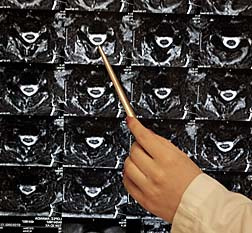 Other patients are suffering health problems but are not sure whether they are related to their MRIs. Janice S. (not her real name) is going through this right now. In the summer of 2006, Janice had an MRI and, because she had a metal plate in her neck, required the contrast dye. She says that she instantly felt as though something was wrong.
Other patients are suffering health problems but are not sure whether they are related to their MRIs. Janice S. (not her real name) is going through this right now. In the summer of 2006, Janice had an MRI and, because she had a metal plate in her neck, required the contrast dye. She says that she instantly felt as though something was wrong."I got really hot when they injected the dye. I felt extremely hot right away, over my whole body. I even broke out into a sweat. After I got home, I got really sick. I was sick for about a week to ten days. I just didn't feel right that whole week: I had a lot of illness—nausea and flu-like symptoms.
"I had to get a second MRI after that but I wouldn't let them use the dye because of what happened."
Janice has suffered serious health problems, including kidney disease, since she had her MRI. She says she does not know for sure if the dye caused those problems.
"I have developed a rare kidney disease and may have to go on dialysis," Janice says. "It's called hypercalciuria extreme. My kidneys are forming oxalates, which are like small shards of glass. It's very rare, so I don't know a lot about it, but I have to take a urine test every month. The doctors are checking to see if they can get it balanced. If not, I will have to go on dialysis.
"I have problems with mobility in my left leg. My left leg and left knee just do not want to work. I'm on Lyrica to get the leg mobilized, but it doesn't help much. I've had diabetes, a heart attack and this rare kidney disease since I had that MRI but I don't know if the MRI caused these problems.
READ MORE MRI HEALTH RISKS LEGAL NEWS
Gadolinium contrast dyes used for MRI procedures have been linked to health risks such as Nephrogenic Systemic Fibrosis (NSF). The disease occurs in patients who have kidney problems and are injected with the contrast dyes because the toxin in the dye is expelled from the body by the kidney. People with kidney problems cannot expel the toxin quickly enough and NSF results.
However, some patients like Janice are in a unique situation because they may not have known they had kidney problems prior to receiving the dye and may not have been screened for kidney problems as is now recommended. Such patients are left wondering whether their medical problems could be linked to the use of gadolinium-based contrast dyes.
